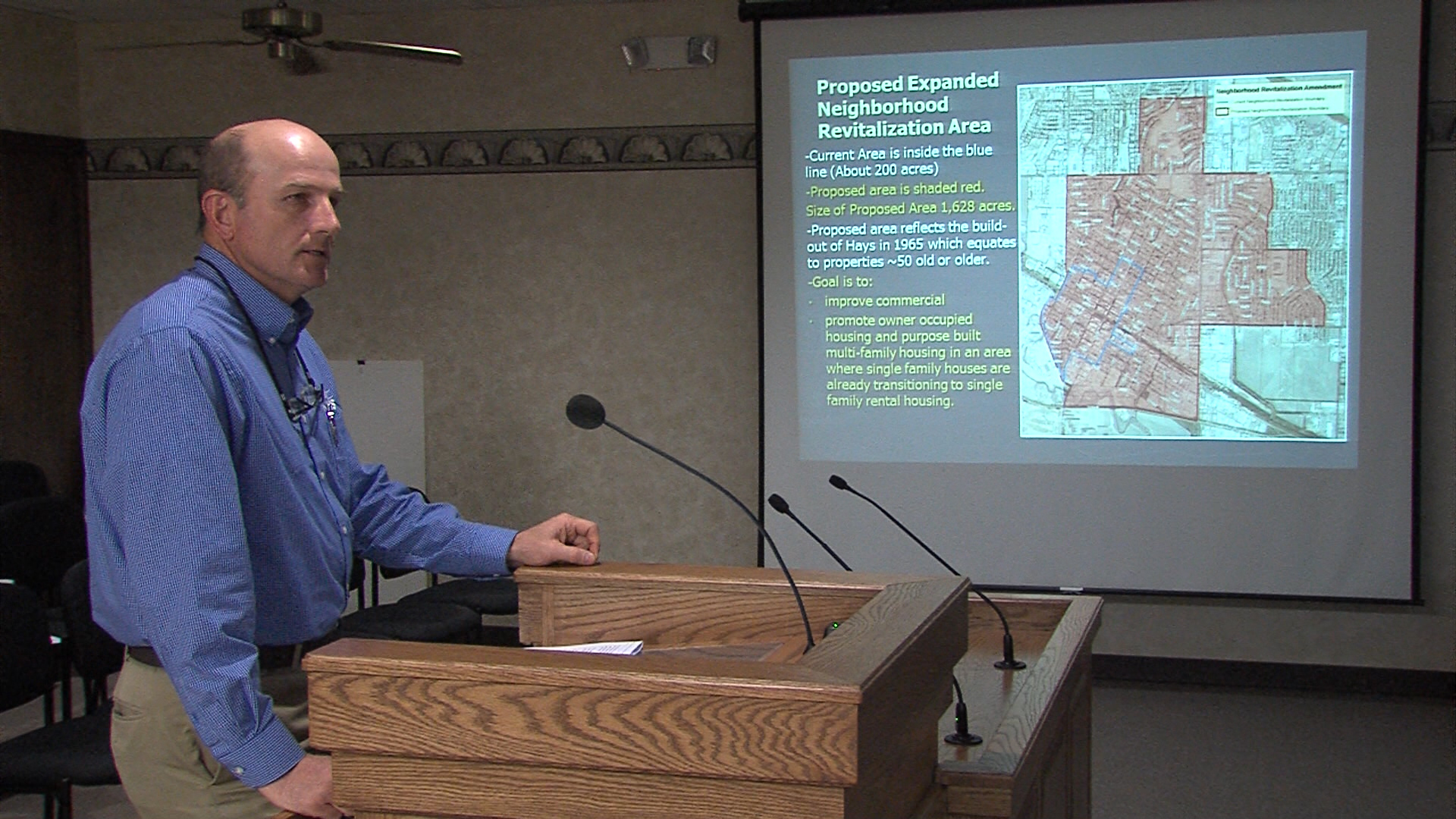
By BECKY KISER
Hays Post
There was just one question asked during last Thursday’s public hearing regarding a proposed update of the Hays Neighborhood Revitalization District Program (NRP) which would considerably increase the area of the NRP.
“It’s very clear the benefits of this. What are the negatives?,” asked John Thissen, a Hays resident and USD 489 Superintendent. Not much, he discovered.
“The down side is if improvements take place without the program they are subject to increased property taxes because presumably the value of the property will go up,” explained longtime city commissioner Henry Schwaller.
The commission voted 4-1 to approve the change which features a 65 percent rebate of increased taxes (based on assessed value after improvements) paid in the first year after completion of construction paid each year for 10 years. Commissioner Lance Jones voted against the measure, preferring a larger rebate of 95 percent.
The current NRP, 209 acres in the downtown area, was created in 2002 and according to Schwaller, it actually spurred development in areas that probably would not have seen rehabilitation. More than 45 properties have benefited from the current NRP. The January 1, 2016 value of those properties was about $4 million.
“We were able to take buildings that were being used for storage and convert them to higher use, thus actually raising the value of them permanently and generating more (property tax) revenue,” Schwaller said.”
The new NRP would cover 1,628 acres, encompassing most of the commercial and residential buildings in Hays more than 50 years old.
“We hope to see that happen here as well,” Schwaller continued, “because it takes neighborhoods that might otherwise be likely not to grow and actually spurs development in them–infill.

“Our concern is that as neighborhoods age, we tend to see them convert to uses that we don’t find desirable. Single family homes become 5-plexes. And the problem is that the other people in the neighborhood decide they don’t want to live next to a duplex and then we have flight from that neighborhood.
“We really do want to keep single-family home neighborhoods intact,” Schwaller stressed, “because the cost of creating new housing developments north and west of town is so incredibly high. Rehabbing an infill is much more desirable.”
“While we lose that incremental gain in valuation, we still receive the original property tax amount and we capture taxes in other ways.”
Another key change to the NRP is to increase and standardize minimum investment from $5,000 for a residential project and $15,000 for a commercial project to $25,000 and $50,000 respectively.
Both the Ellis County Commission and the USD 489 school board must also support resolutions to amend the NRP before it would become effective.
